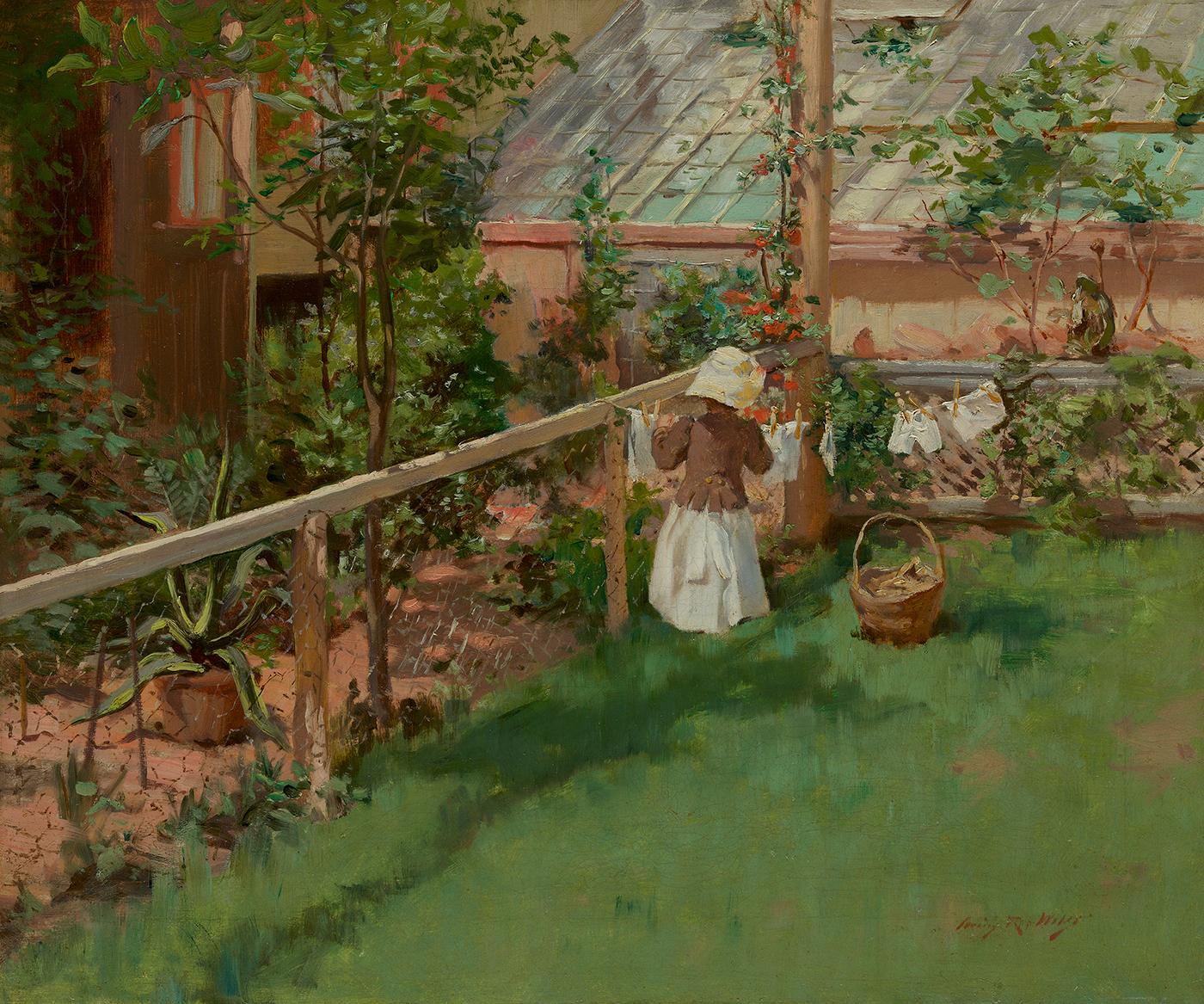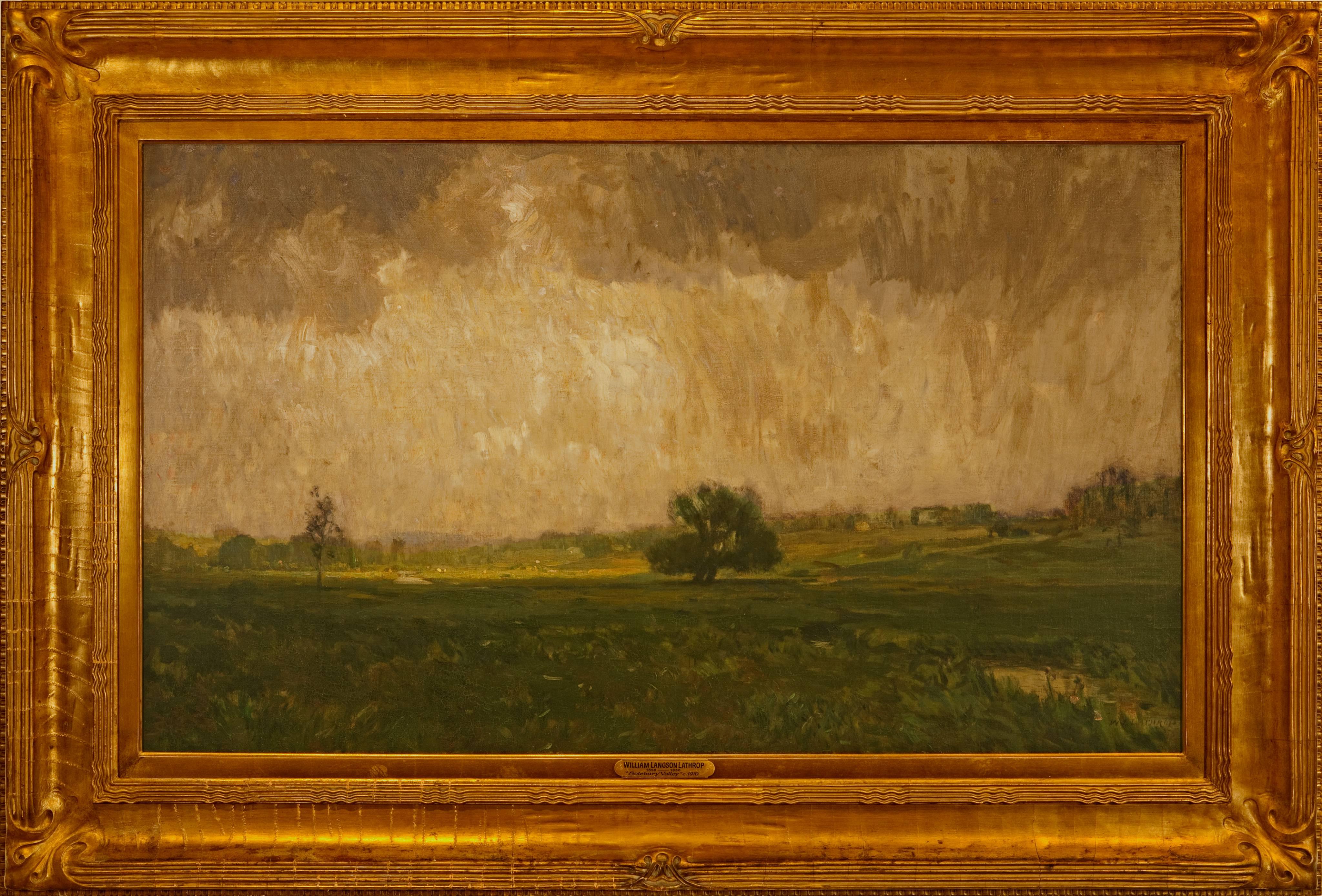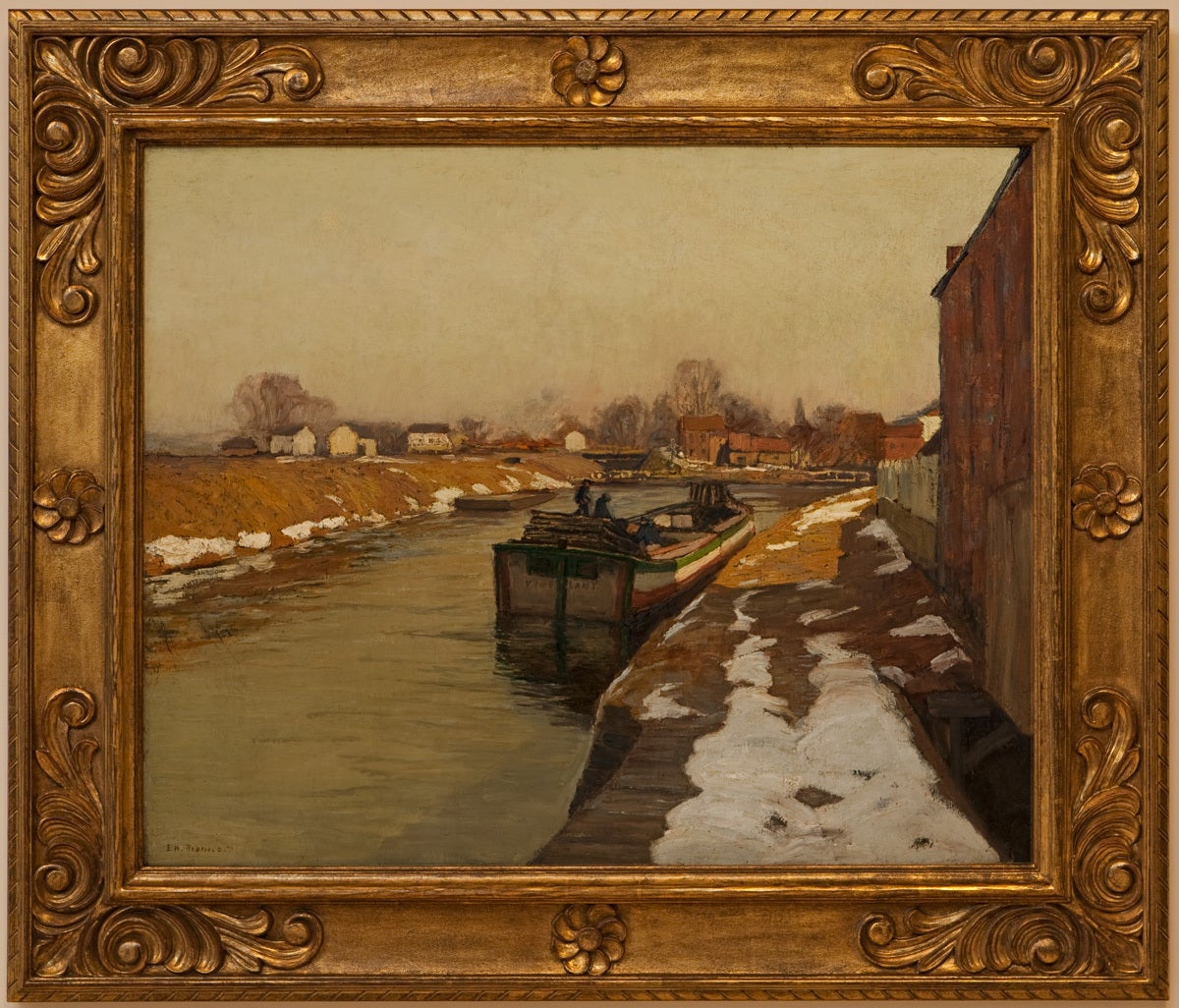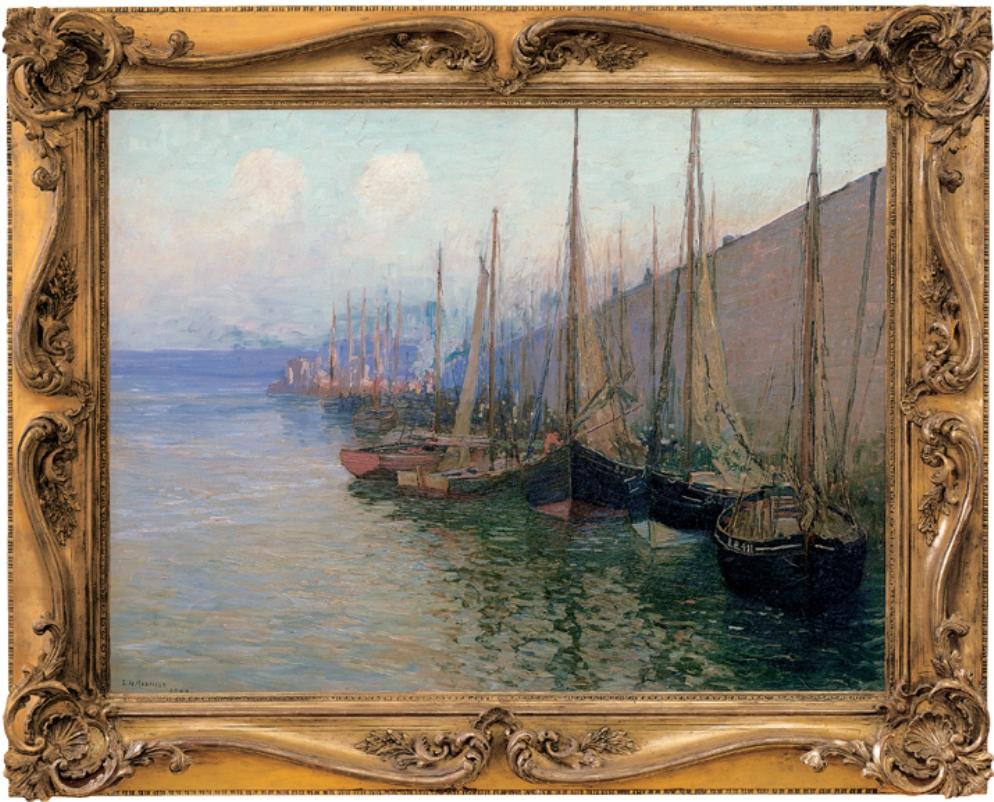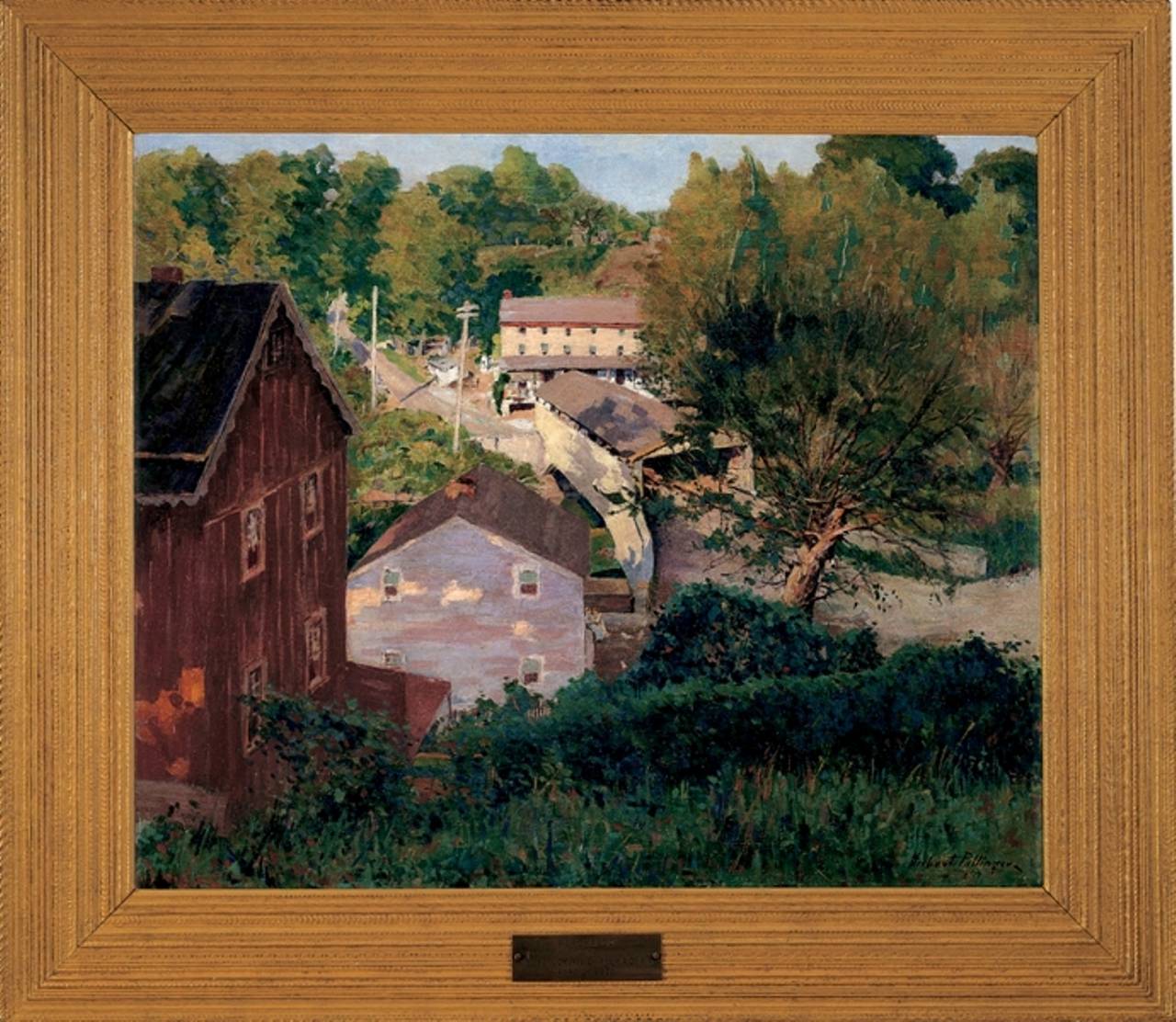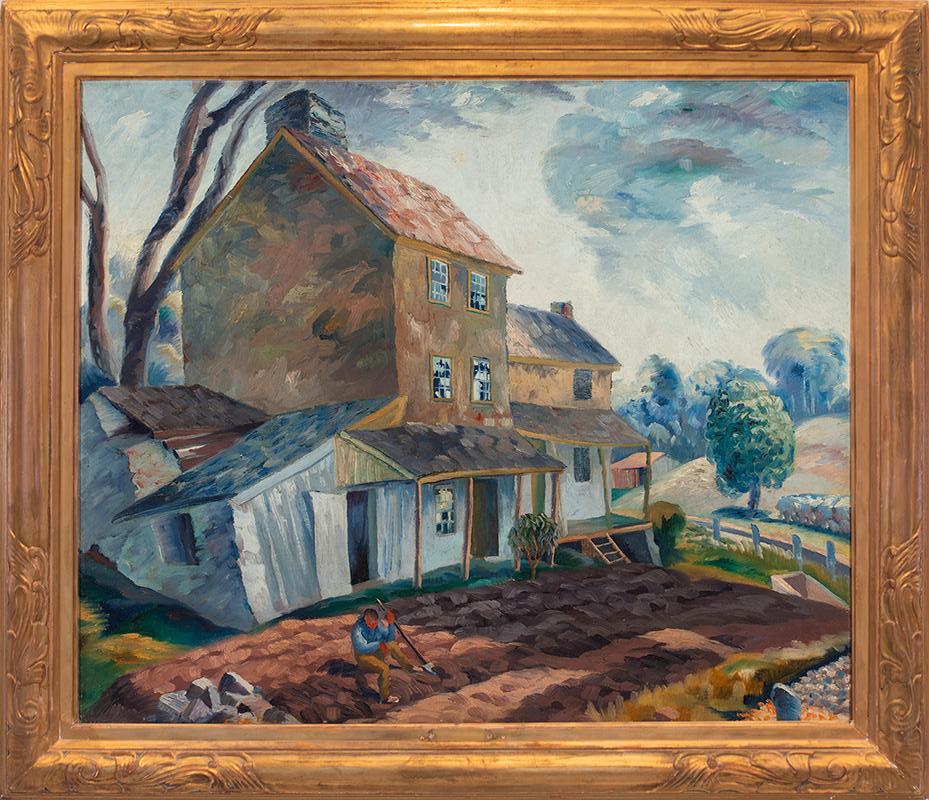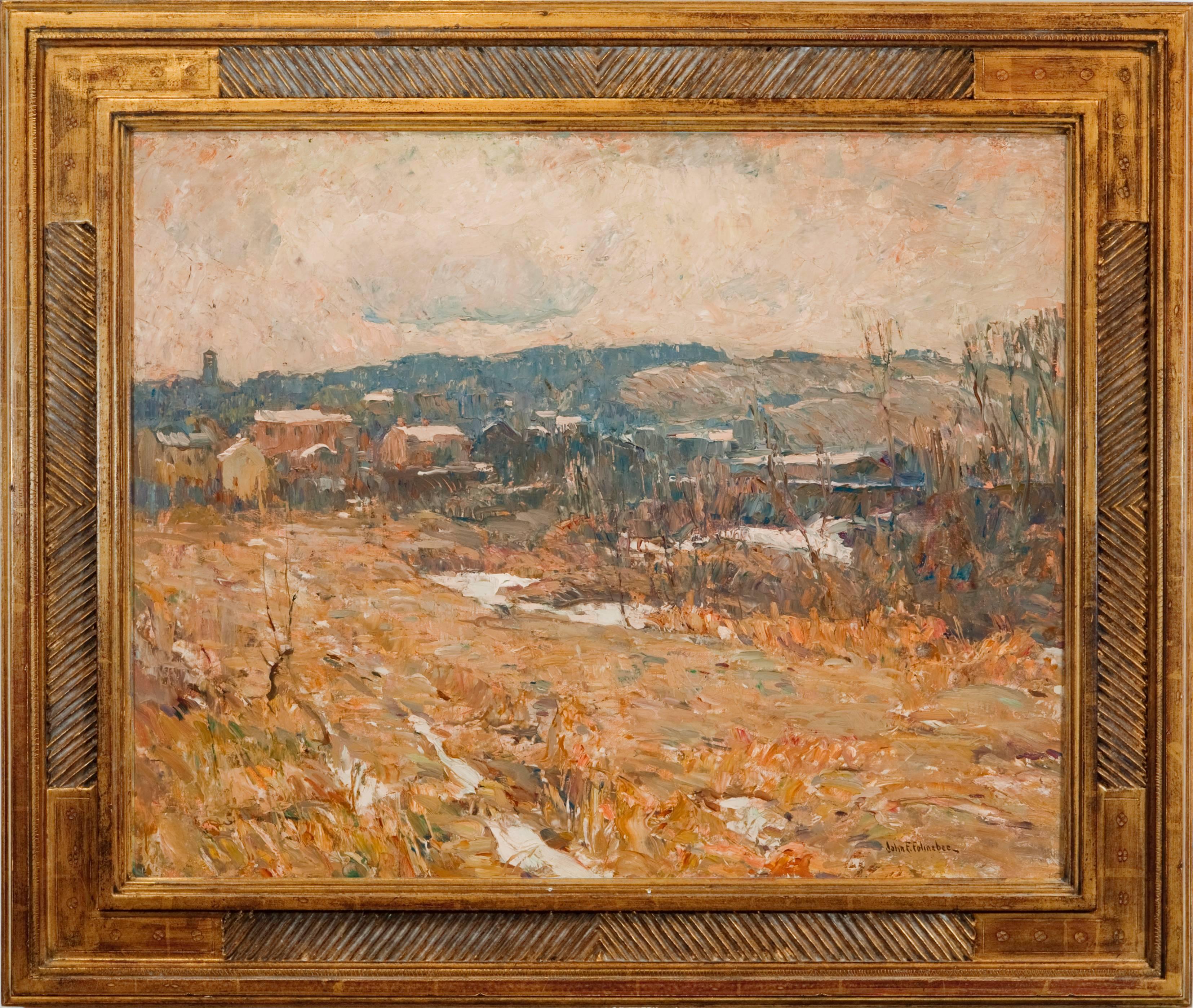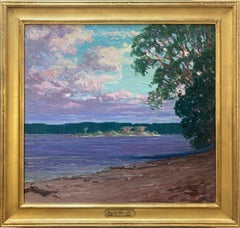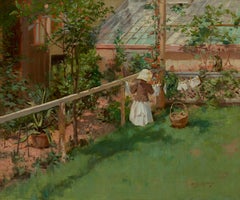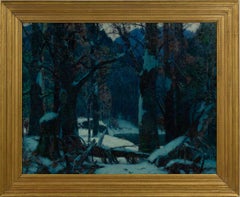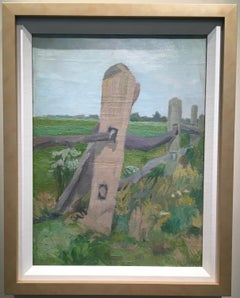
'Modernist Landscape, ' by Unknown (Pennsylvania School), Oil on Canvas Painting
View Similar Items
Video Loading
Want more images or videos?
Request additional images or videos from the seller
1 of 13
Unknown'Modernist Landscape, ' by Unknown (Pennsylvania School), Oil on Canvas PaintingEarly 20th Century
Early 20th Century
About the Item
- Creation Year:Early 20th Century
- Dimensions:Height: 23.5 in (59.69 cm)Width: 18.75 in (47.63 cm)Depth: 0.75 in (1.91 cm)
- Medium:
- Movement & Style:
- Period:
- Condition:
- Gallery Location:Oklahoma City, OK
- Reference Number:Seller: F2D00851stDibs: LU1441210582572
About the Seller
5.0
Vetted Seller
These experienced sellers undergo a comprehensive evaluation by our team of in-house experts.
Established in 2019
1stDibs seller since 2020
59 sales on 1stDibs
More From This SellerView All
- 'River Birch' by James Cobb, Oil on Canvas PaintingLocated in Oklahoma City, OKThis oil on canvas by James Cobb features a stand of river birch trees at the height of fall color with sunlit yellow leaves against the white bark of the b...Category
2010s American Impressionist Landscape Paintings
MaterialsCanvas, Oil
- 'Early Morning River Landscape, ' by Harry L. Hoffman, Oil on Canvas PaintingBy Harry L. HoffmanLocated in Oklahoma City, OKIn this gilt wood framed oil on canvas waterscape, American Impressionist artist Harry Hoffman depicts the last moments of a morning sunrise over a river in predominant hues of lavender, purple, pink and blue. The sky is reflected in the water below with a sandy brown beach and large green tree in the foreground. Harry Leslie Hoffman was born in Cressona, a small community in Pennsylvania’s Schuylkill Valley. His mother was an amateur artist who encouraged her son to pursue a career in the arts. In 1893, Hoffman entered the School of Art at Yale University and studied with John Ferguson Weir, the son of Robert Walter Weir. After graduation in 1897, Hoffman moved to New York to continue his studies at the Art Students League. He also traveled to Paris and took classes at the Académie Julien. In the summer of 1902, Hoffman attended the Lyme Summer School of Art, in the town of Old Lyme on the Connecticut coast. The school was headed by Frank Vincent Dumond and was located in a boarding house owned by Florence Griswold. The school eventually grew into an artists’ colony and a center for American Impressionism. When Hoffman first arrived as a student, he was not permitted to stay in the house which was designated for the professional artists only. However, his outgoing personality soon won him many friends at the colony. In 1905, Hoffman settled in Old Lyme and worked as a full member of the artist colony. He was particularly influenced by Willard Leroy Metcalf, an Impressionist also working in Old Lyme. Fellow artists later fondly recalled Hoffman’s antics at the Griswold house, which included playing the flute and banjo, tap-dancing, singing humorous songs, and performing magic tricks. In 1910, Hoffman married another Old Lyme artist named Beatrice Pope, and the couple had one child in 1921. Hoffman and his wife often escaped New England during the harsh winter months. In the winters of 1914 and 1915 he traveled to Savannah, Georgia with fellow Old Lyme artist William Chadwick...Category
1930s American Impressionist Landscape Paintings
MaterialsCanvas, Oil
- 'Summer River Landscape, ' Unknown, Oil Painting on BoardLocated in Oklahoma City, OKThis 24" x 30" oil on board painting is of a summer landscape with trees and a meandering river in the center of the scene. The artist is unknown, however, there is a signature in th...Category
Late 20th Century American Impressionist Landscape Paintings
MaterialsBoard, Oil
- 'European Street Scene', by Unknown, Oil on Canvas PaintingLocated in Oklahoma City, OKThis signed 25.5" x 29.5" oil on canvas painting is by an unknown artist as the signature is unintelligible in the bottom right corner of the painting. The painting depicts a busy st...Category
20th Century Impressionist Landscape Paintings
MaterialsOil, Canvas
- 'Sanctity, ' by Lane Palmisano, Oil on CanvasLocated in Oklahoma City, OKThis landscape painting depicts a calm, serene water view with a predominant cumulus cloud-filled blue sky of summer. A green tree-lined beach lane with pink flowers is the central f...Category
2010s Impressionist Landscape Paintings
MaterialsCanvas, Oil
$1,728 Sale Price20% Off - 'Century Old Adobe, ' by James Cobb, Oil on Panel PaintingLocated in Oklahoma City, OKThis oil on panel painting by James Cobb depicts an adobe house in the backdrop of the New Mexican landscape. The adobe home is shaded in the reds and oran...Category
2010s Expressionist Landscape Paintings
MaterialsCanvas, Oil
You May Also Like
- At the ClotheslineBy Irving Ramsey WilesLocated in New York, NYSigned lower right: Irving R. WilesCategory
Late 19th Century American Impressionist Landscape Paintings
MaterialsCanvas, Oil
- "Alley Fiends"By John R. GrabachLocated in Lambertville, NJJim’s of Lambertville is proud to offer this artwork by: John R. Grabach (1886 - 1981) John Grabach was a highly regarded New Jersey artist, teacher, and author of the classic text...Category
1930s American Impressionist Landscape Paintings
MaterialsCanvas, Oil
- "Forest Strongholds"By John F. CarlsonLocated in Lambertville, NJSigned lower right. Complemented by a hand carved and gilt frame. Exhibited at the National Academy of Design, 1928Category
20th Century American Impressionist Landscape Paintings
MaterialsCanvas, Oil
- "Solebury Valley"By William Langson LathropLocated in Lambertville, NJSigned lower right. Complemented by a period frame. William L. Lathrop (1859-1938) Deemed “Father of the New Hope Art Colony”, William Langson Lathrop was born in Warren, Illinois. He was largely self-taught, having only studied briefly with William Merritt Chase in 1887, at the Art Students League. Lathrop first moved east in the early 1880s, and took a job at the Photoengraving Company in New York City. While there, he befriended a fellow employee, Henry B. Snell. The two men became lifelong friends and ultimately, both would be considered central figures among the New Hope Art Colony. Lathrop's early years as an artist were ones of continuing struggle. His efforts to break through in the New York art scene seemed futile, so he scraped enough money together to travel to Europe with Henry Snell in1888. There he met and married an English girl, Annie Burt. Upon returning to New York, he tried his hand at etching, making tools from old saw blades...Category
1910s American Impressionist Landscape Paintings
MaterialsCanvas, Oil
- Winter MoonlightBy George William SotterLocated in Lambertville, NJsigned lower rightCategory
1910s American Impressionist Landscape Paintings
MaterialsCanvas, Oil
- "The Canal"By Edward Willis RedfieldLocated in Lambertville, NJJim’s of Lambertville is proud to offer this artwork. Signed lower left. Complemented by a hand carved and gilt frame. Illustrated in "Edward Redfield: Just Values and Fine Seeing" by Constance Kimmerle and the Pennsylvania Academy of the Fine Arts's Exhibition of Paintings by Edward Redfield (April 17 to May 16, 1909) brochure Edward Willis Redfield (1869 - 1965) Edward W. Redfield was born in Bridgeville, Delaware, moving to Philadelphia as a young child. Determined to be an artist from an early age, he studied at the Spring Garden Institute and the Franklin Institute before entering the Pennsylvania Academy from 1887 to 1889, where he studied under Thomas Anshutz, James Kelly, and Thomas Hovenden. Along with his friend and fellow artist, Robert Henri, he traveled abroad in 1889 and studied at the Academie Julian in Paris under William Bouguereau and Tony Robert-Fleury. While in France, Redfield met Elise Deligant, the daughter of an innkeeper, and married in London in 1893. Upon his return to the United States, Redfield and his wife settled in Glenside, Pennsylvania. He remained there until 1898, at which time he moved his family to Center Bridge, a town several miles north of New Hope along the Delaware River. Redfield painted prolifically in the 1890s but it was not until the beginning of the twentieth century that he would develop the bold impressionist style that defined his career. As Redfield’s international reputation spread, many young artists gravitated to New Hope as he was a great inspiration and an iconic role model. Edward Redfield remained in Center Bridge throughout his long life, fathering his six children there. Around 1905 and 1906, Redfield’s style was coming into its own, employing thick vigorous brush strokes tightly woven and layered with a multitude of colors. These large plein-air canvases define the essence of Pennsylvania Impressionism. By 1907, Redfield had perfected his craft and, from this point forward, was creating some of his finest work. Redfield would once again return to France where he painted a small but important body of work between 1907 and 1908. While there, he received an Honorable Mention from the Paris Salon for one of these canvases. In 1910 he was awarded a Gold Medal at the prestigious Buenos Aires Exposition and at the Panama-Pacific Exposition of 1915 in San Francisco, an entire gallery was dedicated for twenty-one of his paintings. Since Redfield painted for Exhibition with the intent to win medals, his best effort often went into his larger paintings. Although he also painted many fine smaller pictures, virtually all of his works were of major award-winning canvas sizes of 38x50 or 50x56 inches. If one were to assign a period of Redfield’s work that was representative of his “best period”, it would have to be from 1907 to 1925. Although he was capable of creating masterpieces though the late 1940s, his style fully matured by 1907 and most work from then through the early twenties was of consistently high quality. In the later 1920s and through the 1930s and 1940s, he was like most other great artists, creating some paintings that were superb examples and others that were of more ordinary quality. Redfield earned an international reputation at a young age, known for accurately recording nature with his canvases and painting virtually all of his work outdoors; Redfield was one of a rare breed. He was regarded as the pioneer of impressionist winter landscape painting in America, having few if any equals. Redfield spent summers in Maine, first at Boothbay Harbor and beginning in the 1920s, on Monhegan Island. There he painted colorful marine and coastal scenes as well as the island’s landscape and fishing shacks. He remained active painting and making Windsor style furniture...Category
Early 1900s American Impressionist Landscape Paintings
MaterialsCanvas, Oil
Recently Viewed
View AllMore Ways To Browse
Master Workshop
Countryside Art
Original Island
Vintage Spring Art
Vintage Landscape Design
Town Home
Coast Oil
Vintage Oil Painting
Oil Paintings Of Parks
Town And Home
Pink Landscape
Art Signed James
Water Edge
Landscapes Of Spain
British Studio
Paintings Of Boats
Paris Impressionist Landscape Paintings
Oil Sketch
